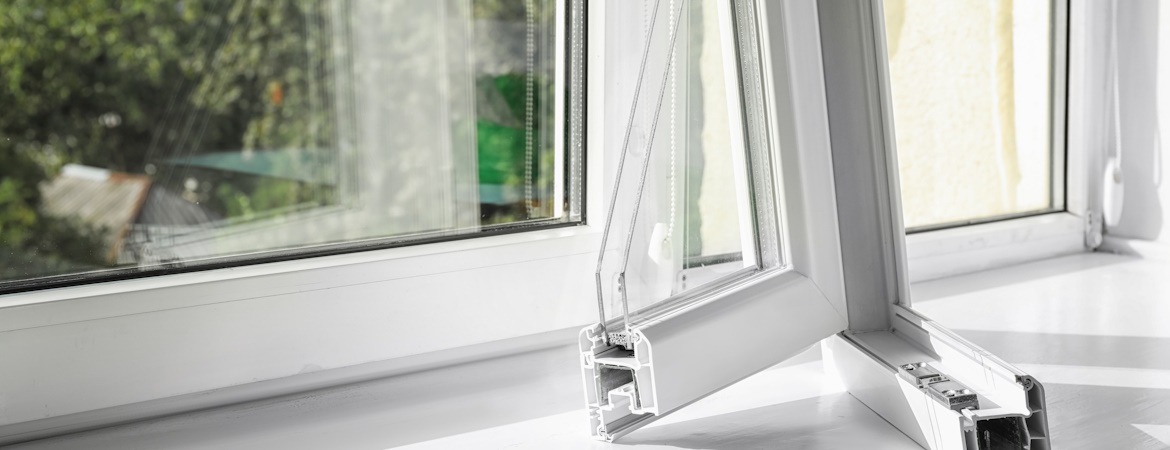Before Getting Window Replacements, Learn About The Parts Of Windows In This Ultimate Guide
If you’ve ever considered a window replacement, you might know well the broad range of options to consider. With glass types, pane count, customizations and more, it can be overwhelming to know what to look for in new windows for your home.
When you understand the key terms associated with window anatomy, it gets easier to make an informed decision on the best windows for your home. Considering windows’ effects on curb appeal, home value, and energy-efficiency, it’s an important choice to make.
The Basics Of Window Anatomy
Window anatomy refers to the various components that make up a window, including the frame, sash, and pane. Each of these components plays a crucial role in the mechanics of the window and how it functions in terms of energy-efficiency and, often, aesthetics.
Understanding the Parts Of a Window
The main structural elements of a window are the frame, sash and pane, as well as other smaller components that contribute to the operation and appearance of the window.
Window replacements often consist of replacing the entire window as one structure. However, it’s possible that only one part of a window can be damaged, with the other parts still functioning well. Knowing the different parts of the window is very useful for helping to identify problems with your window. Older or inefficient windows will often require an entire window replacement, but an isolated issue with one part of your window can sometimes be repaired.
Reliable window replacement services usually offer free consultations and will never recommend a full window replacement if any one individual part can be affordably fixed to solve the problem.
What Is a Window Frame?
A window frame is the backbone of a window, providing structural support and stability. It provides the framework that holds the panes of the window in place and keeps the window attached to the wall. The frame also acts as an airtight seal. Window frames are typically made from fiberglass, vinyl, aluminum, or wood.
Which Frame Material Is Best For Window Replacements?
Fiberglass
Fiberglass is a composite material that is made of fine glass fibers solidified in a resin. Fiberglass windows are known for their durability, energy efficiency and competitive pricing. Their durable composition means they do not expand or contract with temperature fluctuations. This feature ensures a consistent and tight seal, so fiberglass frames are often a preferred choice for residential and commercial property owners looking to minimize air leaks and thermal transfer.
Vinyl
Vinyl frames are a low-maintenance window replacement option that is resistant to rot, peeling, and fading. Vinyl is a popular option for many as it is moldable to any shape and comes in any color, providing a versatile window option for all kinds of architectural styles.
Vinyl window frames also rank highly in insulation properties. The one thing to consider is that their flexible properties mean they are prone to sagging over time.
Aluminum
Aluminum frames are lightweight, strong, and durable, making them a great choice for larger windows. Metal structural frames have come a long way, and the current manufacturing process for aluminum means they are resistant to corroding. Aluminum’s bendable properties also mean that it can easily be manipulated to any shape, making it a great option for unconventional windows.
Aluminum is generally a weaker insulator than other popular options, however processes such as weather-stripping and thermal treatments can help resolve the problem.
Wood
Wood is a versatile material that can be manufactured to virtually any size, shape, and color. Easy to paint and stain, wood also provides a customizable option that can work for any preference or design style. Wooden window frames also provide good insulation, keeping your home comfortable in both hot and cold temperatures.
However, wood windows are susceptible to any wood-related problem such as rot, warping, and cracking, but with proper maintenance and upkeep, wood windows can last up to 30 years and provide an attractive, durable option that is easy to repair.
What Is a Window Sash?
A window sash specifically refers to the framework that holds window panes in place. The sash can be stationary or movable, opening vertically, horizontally, or with a pivot design to allow for ventilation. Depending on the type of window, the sash can be single-hung, double-hung, casement, or sliding; these options refer to the mechanism with which the window opens.
Window sashes play an important role for window ventilation, allowing for greater control of airflow and natural light. They also impact energy conservation, overall aesthetics and style, and locking or latching sashes have the added benefit of providing extra security to your property.
What Are Window Panes?
A window pane is the sheet of glass inside the window frame. It allows natural light to enter while providing a protective barrier against the elements.
Glass window panes can come in multiple options including single-pane, double-pane, triple pane thickness, and energy efficient options.
Single-pane windows mean one single sheet of glass fits into the sash. It is a highly affordable option, but is prone to heat transfer and condensation and has become less popular in residential use over time.
Double-paned windows consist of two layers of glass with a sealed space in between, trapping an extra layer of air and gasses within the panes. Thisworks to improve insulation, energy efficiency, and reduce outside noise.
Energy-efficient glass is usually double or triple pane and is treated with UV coatings or window film to further enhance energy efficiency. Some energy-efficient windows come with low-emissivity coatings that reflect heat, further conserving energy and keeping your home warm in the winter and cool in the summer. These window panes are extremely durable, but often come with a higher cost to replace windows.
Which Type Of Replacement Window Is Right For My Home?
Knowing the different parts of a window helps to differentiate problems or vulnerabilities, especially as you consider buying new windows for your home.
But depending on what types of windows you’re looking for, the window frame, sash, and window paning might already be part of a larger integrated design. Here are a few popular window design options that you might be familiar with.
Double Hung Windows
These windows are made up of two vertically sliding sashes that can be opened from either the top or bottom. The top sash opens to let warm air out, while the bottom sash can open to let cool air in. Double-hung windows are often a great choice for two-story homes, especially for upstairs bedrooms.
Casement Windows
This option consists of hinged sashes that swing open from the side. They offer excellent ventilation, airtight sealing and unobstructed views. Casement windows are also known as crank windows because they can open with a handle that cranks the window’s arm to secure the window open. These windows are a popular choice in modern homes due to their easy mechanism and clean look. However, if you rely on window unit air conditioners or box fans, they may interfere with their functionality.
Bay and Bow Windows
The windows are designed to extend out of the wall, creating a visually appealing window feature. Bay windows typically have a central fixed window with two venting windows on either side, forming a gentle curve. Bow windows, on the other hand, consist of several interconnected windows that form a more pronounced curve. Both window types light in more light and create extra space inside a room that is perfect for eating areas, reading nooks, and curved benches.
Your Window Replacement Project Can Be a Breeze!
Now that you know the ins and outs of window anatomy, you have all the knowledge to make informed decisions about what works for you. No matter your choice, ensure you reach out to a reputable window replacement service for purchase and installation.
Ask your window replacement company about energy efficiency, longevity, and the cost to replace windows, and together you can find the perfect choice for your home.

